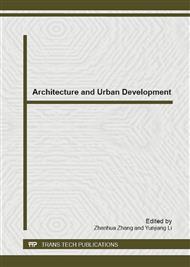p.404
p.409
p.413
p.420
p.425
p.432
p.438
p.444
p.454
Unloading Behavior Study on FRP-to-Concrete Interface
Abstract:
Bi-linear constitutive model is commonly used to study the bond-slip behaviors of the interface between FRP and concrete, unloading behavior is one of the most important problems that should be considered. The path of unloading is debatable, no specialized research achievement has been found so far. Based on simple shear test, the model with secant unloading is employed to study the unloading behavior of the interface between FRP and concrete in this paper, then governing equation about this behavior during the bond-slip process of the interface is derived. A closed form analytical solution about the slip and shear stress distribution of the whole interface, as well as the load-displacement response are obtained, which are also compared with that of elastic unloading , the main difference between them are given. Results obtained in this paper are helpful to further study on more complicated problems (such as the bond-slip behavior of the interface caused by two adjacent flexural cracks, as well as intermediate shearing crack).
Info:
Periodical:
Pages:
425-431
Citation:
Online since:
November 2012
Authors:
Keywords:
Price:
Сopyright:
© 2012 Trans Tech Publications Ltd. All Rights Reserved
Share:
Citation:


